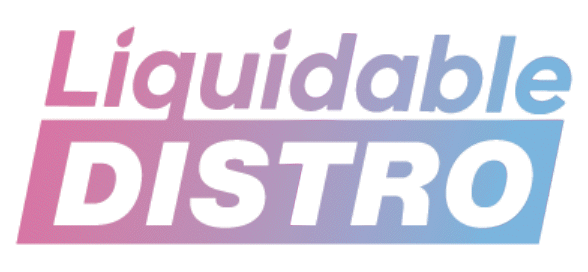The vaping industry had tremendous changes in 2022, both positive and bad.
The growth in the number of adult e-cigarette users, which reached an all-time high of over 4 million, was one of the year’s most noteworthy statistics.
Simultaneously, the number of adult smokers fell to its lowest level ever recorded.
In this post, we will summarise the important events in the vaping industry in 2022 and speculate on what the future may hold.
Disposable Vapes: The Vaping Industry’s Dominant Force
The rise of disposable vapes was one of the main trends of 2022, with brands like ElfBar and Geekbar leading the way in sales.
These companies, however, received the greatest scrutiny and criticism from sceptics and anti-vaping organisations.
In response, Geekbar launched VapeWatch, a website aimed at parents, schools, and other stakeholders that provided evidence-based information and advice regarding vaping and disposable vapes in particular.
The disposable vape market also saw an infusion of new producers, including as IVG, Lost Mary, and SMOK, but this increased competitiveness also resulted in an increase in counterfeit disposable vapes flooding the market.
Trading Standards Agencies in the United Kingdom conducted many raids on shops selling illegal, counterfeit disposable vapes that exceeded the TPD laws’ legal limits of 2ml of vape juice or 20mg of nicotine.
These organisations also conducted “secret shopper” stings, in which volunteers under the legal age of 18 attempted to acquire disposable vapes.
An alarming amount of these efforts were successful, with mobile phone shops, convenience stores, and discount stores being the primary culprits.
The Khan Report and Vaping’s Future
In June 2022, Dr. Javen Khan OBE presented an impartial assessment analysing England’s progress toward its objective of becoming smoke-free by 2030.
The government-commissioned analysis examined smoking prevalence, e-cigarette use, and the feasibility of achieving the smoke-free goal.
According to Dr. Khan’s findings, while e-cigarettes have the potential to help achieve the smoke-free objective, there is a lack of consistency in their regulation and a need for more rigorous evidence on their safety and effectiveness.
The research also advocated for the creation of a national register for e-cigarette users in order to track their progress and assist them in quitting smoking.
The Khan Report spurred a discussion on the role of e-cigarettes in smoking cessation and the necessity for stricter regulation.
Some stated that e-cigarettes were a vital tool for helping people stop smoking and should be promoted as such, while others maintained that the long-term safety of e-cigarettes was unclear and that stronger regulation was needed to protect public health.
The paper also emphasised the environmental consequences of disposable vapes and advocated for the development of a recycling programme to offset these consequences.
The FDA is cracking down on youth vaping.
The Food and Drug Administration (FDA) in the United States resumed its war on child vaping in 2022.
To prevent young people from getting e-cigarettes, the agency took a variety of steps, including raising the minimum age to purchase tobacco products, including e-cigarettes, to 21 and implementing strict age verification for online sales.
The FDA also started “The Real Cost,” a public education campaign to warn young people about the dangers of vaping.
Despite these efforts, the Centers for Disease Control and Prevention (CDC) reported that more over one in every four high school students smoked e-cigarettes in 2022.
In response, the FDA took additional action, including sending warning letters to companies that promoted e-cigarettes in ways that appealed to young people and issuing a final order demanding the withdrawal from the market of all unlawful flavoured e-cigarette products.
The FDA also announced plans to limit the sale of flavoured e-cigarette products to age-restricted, in-person venues, as well as to seek premarket approval for new e-cigarette products.
The vaping business and its allies resisted these regulatory measures, claiming that they would reduce the number of adult smokers who used e-cigarettes to stop smoking.
Some even suggested that the FDA’s efforts will lead to an increase in smoking-related mortality by driving adult smokers back to cigarettes.
Throughout the year, there was debate about the usefulness of e-cigarettes in smoking cessation and the right level of regulation.
COVID-19 and vaping
In 2022, the COVID-19 pandemic also had an impact on the vaping business.
Many physical and mortar vape shops were forced to close due to lockdowns and other measures in place to restrict the spread of the virus, resulting in a fall in sales.
The sector reacted to the new normal by transitioning to online sales, with some stores offering clients delivery or pickup alternatives.
Concerns were also raised regarding the potential dangers of vaping during the pandemic.
Although the evidence was inconsistent, some research revealed that e-cigarette usage may raise the chance of severe COVID-19 outcomes.
During the pandemic, the World Health Organization (WHO) and other public health organisations recommended individuals to use e-cigarettes with caution and to avoid vaping until more was known about the possible consequences.
Conclusion
With the emergence of disposable vapes, the publishing of the Khan Report, and the ongoing debate over regulation and public health, 2022 was a year of significant advances in the vaping business.
The COVID-19 pandemic had an effect on the industry as well, causing a shift to internet sales and increasing concerns about the potential consequences of vaping during the pandemic.
As the new year begins, it remains to be seen what the future contains for the vaping sector and how it will deal with the obstacles that lie ahead.

Comments are closed